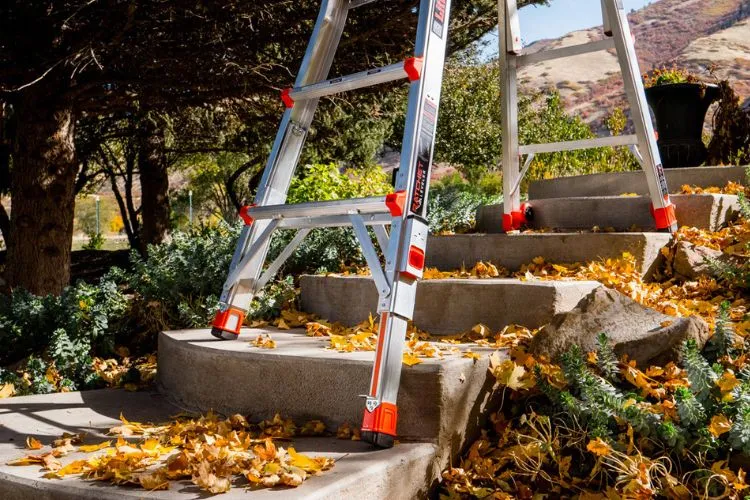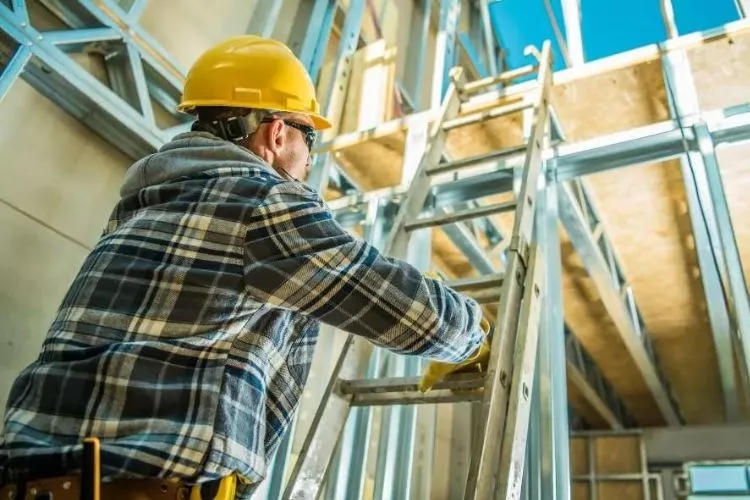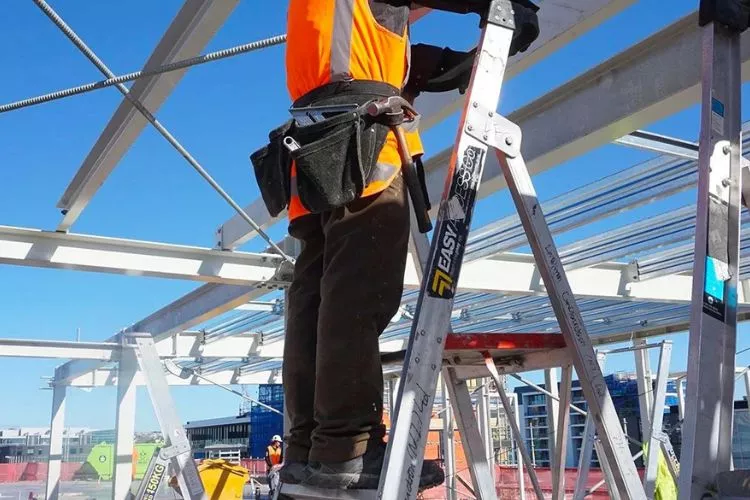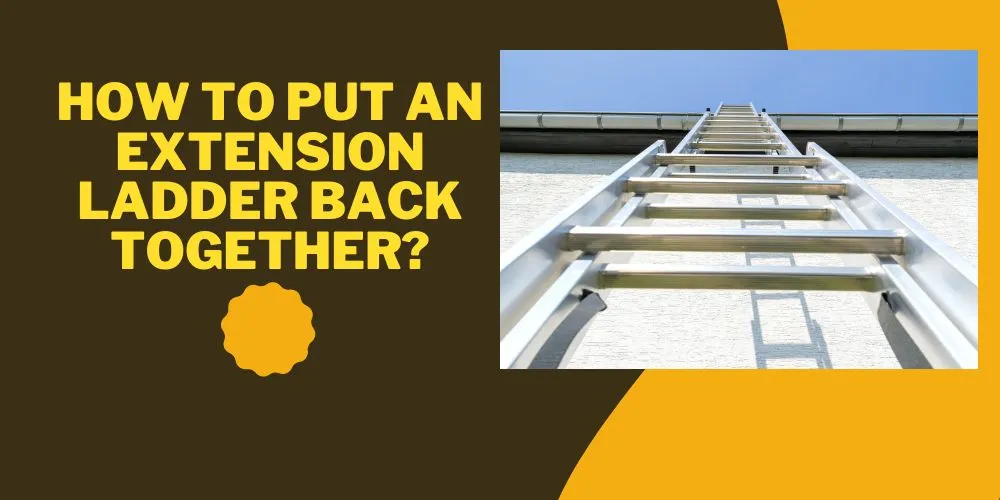Introducing our comprehensive guide on how to use a ladder leveler effectively and safely. Ladder levelers are invaluable tools for achieving stability and balance on uneven surfaces, reducing the risks associated with working at heights.

In this article, we will provide you with a step-by-step walkthrough, covering everything from selecting the right ladder leveler to securing and adjusting it for optimal performance.
How To Use A Ladder Leveler: A Step-by-Step Guide
Using a ladder leveler can greatly enhance safety and stability while working at heights. Ladders are essential tools for various tasks, but uneven surfaces can pose significant risks.
A ladder leveler provides a simple and effective solution by allowing you to adjust the ladder’s legs independently and achieve a stable and level position.
In this guide, we will walk you through the step-by-step process of using a ladder leveler to ensure a secure and balanced setup.
Understand Your Ladder Leveler
Before using a ladder leveler, it’s important to familiarize yourself with its components and how it works. A ladder leveler typically consists of two brackets or legs that are attached to the ladder’s feet.
These brackets are adjustable and can extend or retract to compensate for uneven surfaces. Additionally, they have a locking mechanism to secure the desired position.
Choose the Right Ladder Leveler
There are different types and models of ladder levelers available on the market. It’s essential to choose one that is compatible with your ladder and meets your specific needs.

Consider factors such as weight capacity, size, adjustability, and attachment methods. Read the manufacturer’s instructions and ensure that the ladder leveler is suitable for your ladder type.
Inspect and Prepare the Ladder
Before using a ladder leveler, it’s crucial to inspect your ladder for any damages or defects. Check for loose screws, cracked rungs, or bent parts. Ensure that all hinges, locks, and spreader bars are in good working condition. Make any necessary repairs before proceeding.
Set Up the Ladder on a Solid Surface
Choose a stable and solid surface for setting up your ladder. Avoid placing the ladder on soft ground, unstable platforms, or slippery surfaces. Clear any debris or obstacles around the ladder to ensure a safe working area.
Adjust the Ladder Height
Extend the ladder to the desired height for your task. Make sure that the ladder’s fly sections are securely locked in place. Double-check the locking mechanisms to ensure they are functioning correctly.
Position the Ladder Leveler
With the ladder at the desired height, position the ladder leveler on the ground beneath one of the ladder’s feet. Ensure that the ladder leveler’s brackets align with the ladder feet and that they are properly attached.
Adjust the Brackets
Most ladder levelers have adjustable brackets designed to accommodate uneven surfaces. Use the provided knobs or levers to extend or retract the brackets until they make proper contact with the ground.
Adjust the brackets individually to obtain a level position. Check the bubble level or other leveling indicators to ensure the ladder is balanced.
Secure the Brackets
Once you have achieved a level position, lock the brackets in place using the locking mechanisms provided. Make sure the brackets are securely fastened, preventing any movement or sliding during use.
Test the Stability
Before climbing the ladder, give it a gentle shake and ensure that it feels stable and secure. If the ladder wobbles or feels unsteady, double-check the bracket connections, leveling adjustments, and locking mechanisms. Make any necessary adjustments or corrections.

Climb and Work Safely
Once you have confirmed that the ladder is stable and level, you can climb and work on it with confidence. Remember to follow proper ladder safety guidelines, such as maintaining three points of contact, facing the ladder while ascending or descending, and not overreaching.
Monitor and Adjust as Needed
While working on the ladder, periodically check the stability and levelness. If you notice any changes or the ladder feels unsteady, stop working and investigate the issue.
It’s important to regularly monitor the ladder’s position and make any adjustments to the ladder leveler as needed.
Store the Ladder Leveler Properly
After completing your task, remove the ladder leveler from the ladder. Clean any dirt or debris from the brackets and ensure they are in good condition. Store the ladder leveler in a dry and secure location to prevent damage and ensure its longevity.
you may also read: How To Use A Ladder On Uneven Ground | How to Put a Ladder On a Sloped Roof
Frequently Asked Questions (FAQs)
Can I use a ladder leveler on any type of ladder?
Ladder levelers are designed to be compatible with various ladder types, including extension ladders, step ladders, and combination ladders. However, it’s important to check the ladder leveler’s specifications and compatibility with your specific ladder model.
Can I use a ladder leveler on uneven or sloped surfaces?
Yes, ladder levelers are specifically designed to accommodate uneven surfaces. They can help stabilize the ladder and provide a level position on surfaces with slight slopes or unevenness.
Should I use a ladder leveler on both ladder feet?
While using a ladder leveler on both ladder feet can provide enhanced stability, in some situations, using it on a single foot may be sufficient. Always assess the specific conditions and requirements of your task to determine the appropriate usage.
Can I adjust the ladder leveler while standing on the ladder?
It is not recommended to adjust the ladder leveler while standing on the ladder. Always ensure your safety by descending from the ladder before making any adjustments to the leveler.
Conclusion:
Using a ladder leveler is a practical and efficient way to achieve a stable and level platform when working at heights. By following the step-by-step guide outlined above, you can ensure proper setup and maximize ladder safety.
Remember to choose the appropriate ladder leveler for your ladder type, inspect the ladder for any damages, and always prioritize safety while using the ladder. With a level and stable ladder, you can carry out your tasks confidently and securely.


